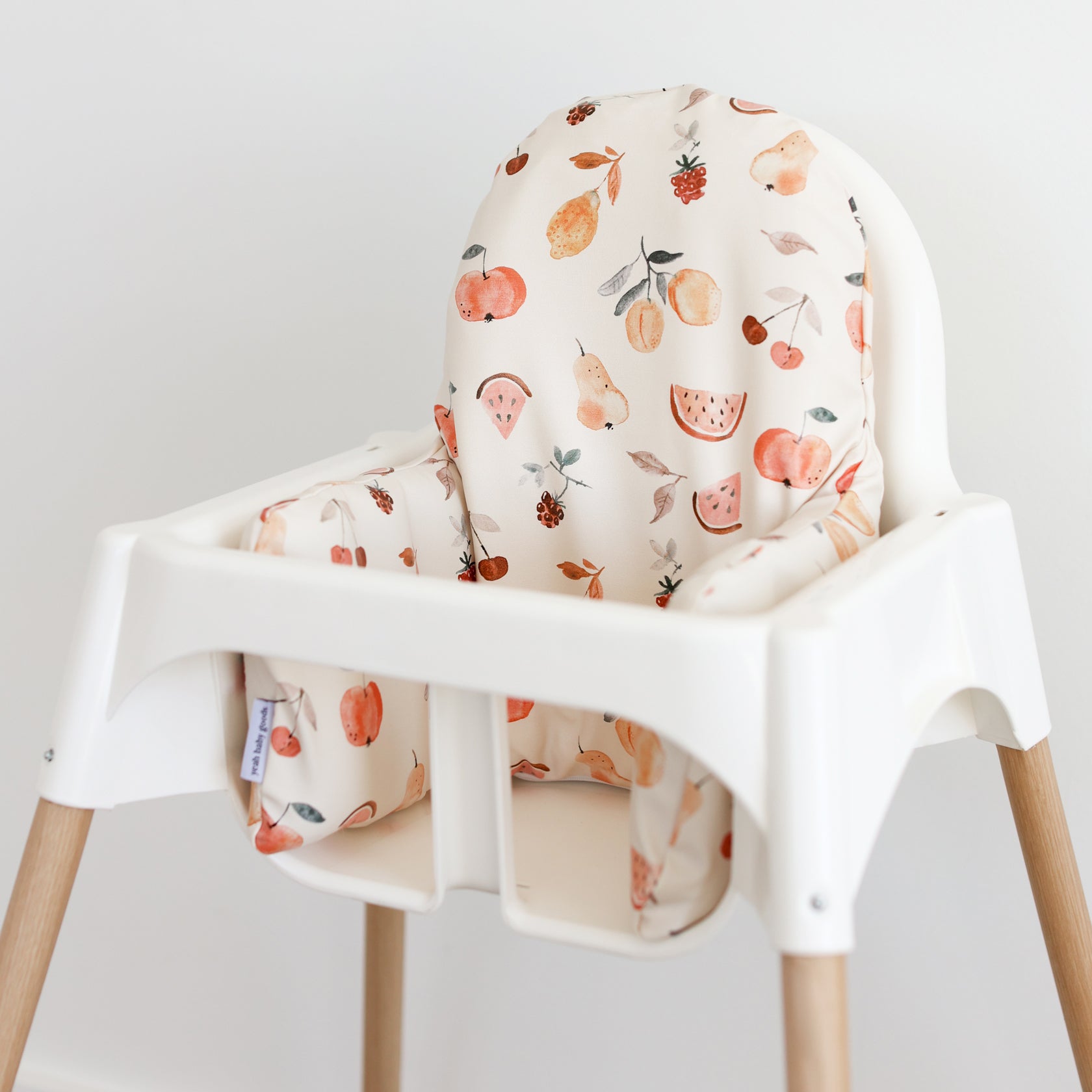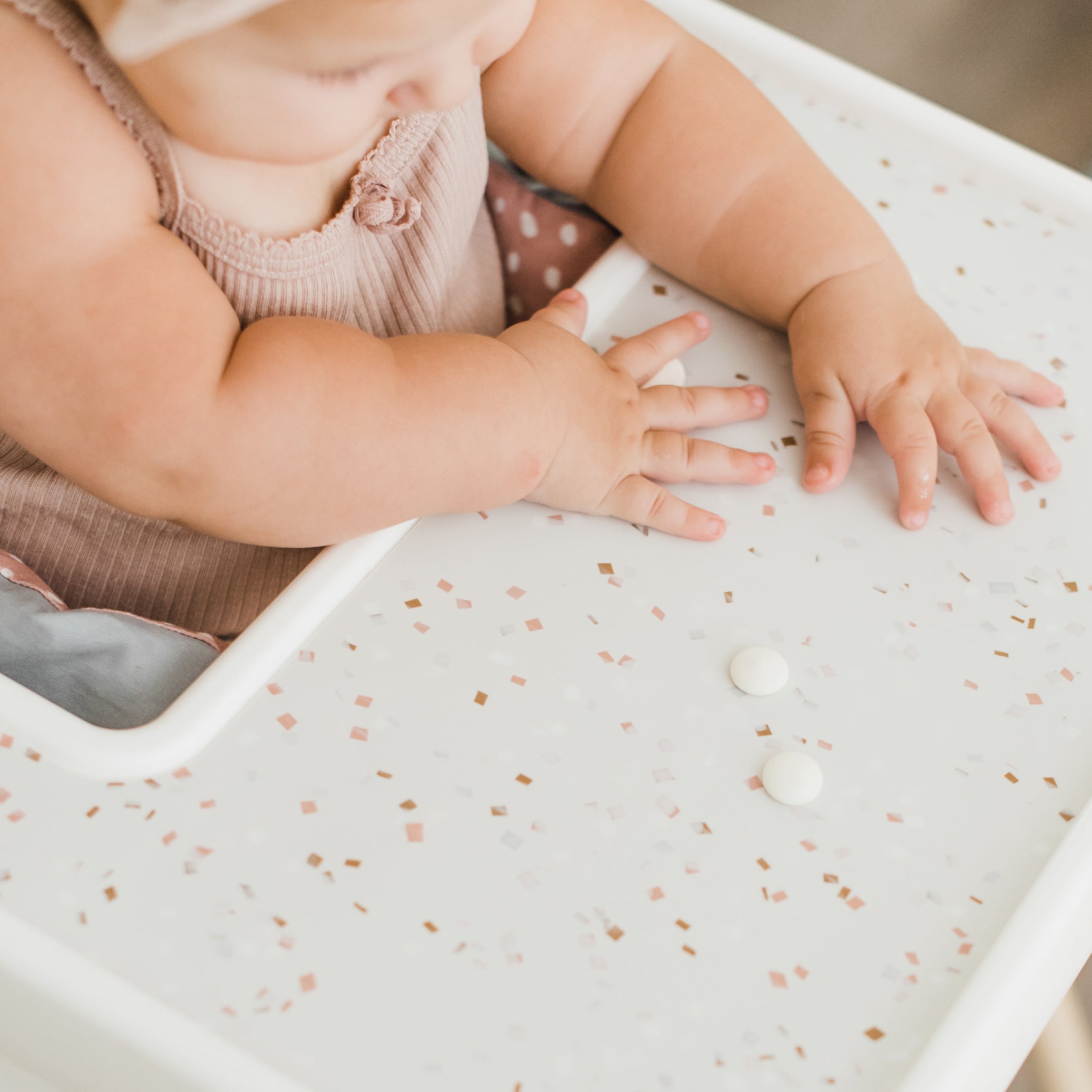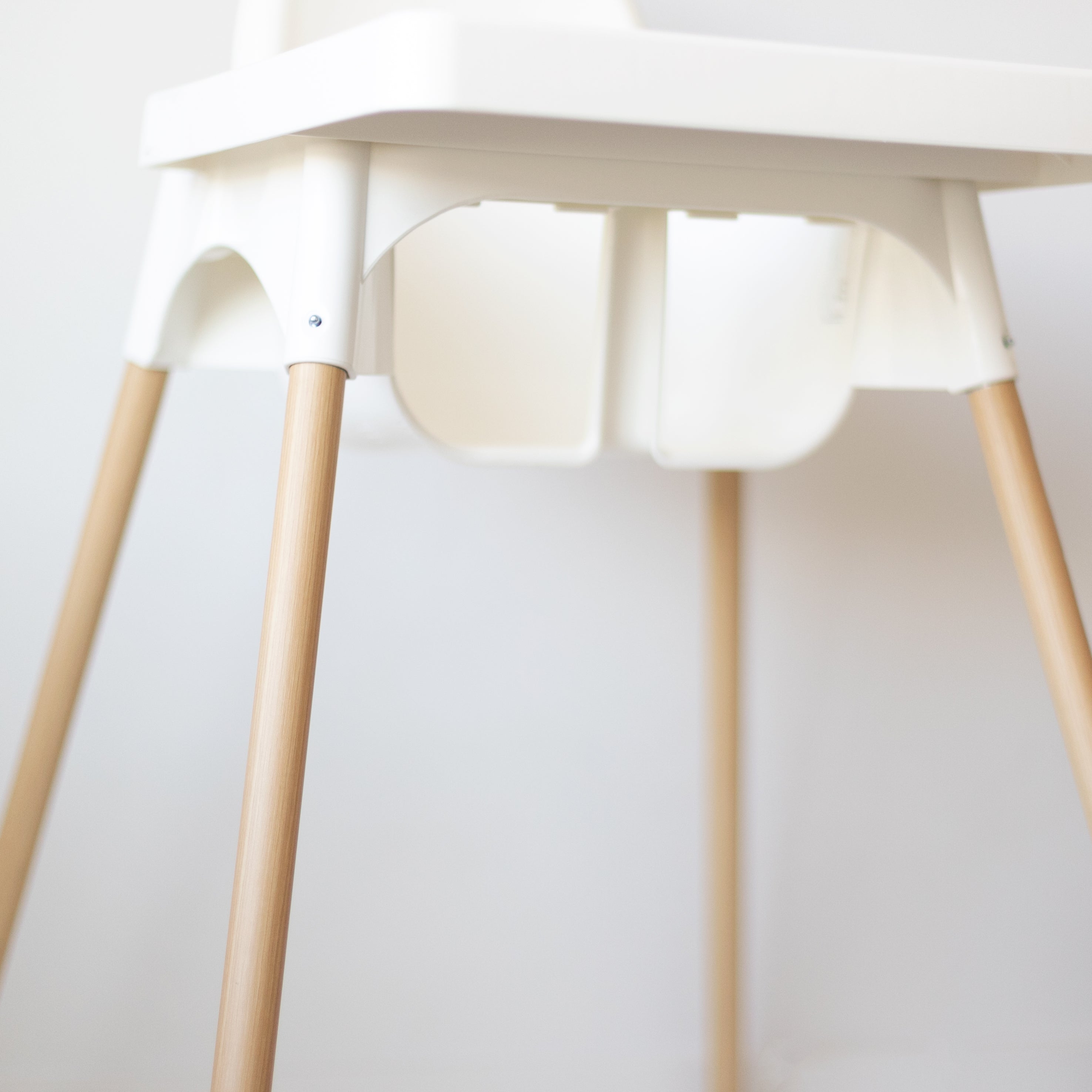Can I Put My Baby in the Highchair BEFORE Solids?

The AAP, CDC and WHO, along with every developmental feeding specialist I know, all recommend waiting until around 6 months of age to begin introducing solid foods to your baby. (This post will help you determine if your baby is ready.)
It can be so exciting to get your high chair set up after purchasing all of your new Yeah Baby Goods accessories, so you might be wondering, "Is it OK to put my baby in the high chair BEFORE they are ready to start learning to eat solid foods?"
As with most things related to feeding development, the answer to this starts with my favorite phrase…
It depends!
In this case, it depends on the age and motor skills of your baby.
First, let's talk about age. Given what we know about infant development, I would avoid placing your baby into a chair before 4 months of age, and to be honest, even that might be on the early side. Because babies develop at different rates, looking at your infant’s motor skills is the more important factor at play here. Before you place your baby into a high chair, they should be able to hold their head up on their own, tolerate sitting upright in your lap or on the floor with your support, and be reaching out for objects and toys while in this position.
So let's discuss WHY you might want to put your baby in their chair before they’re showing all the readiness signs for starting solid foods.
PLAY
If your baby is older than 4 months, you might notice they seem like they want to be held in a more upright position in your lap. Many parents come to me at this stage and say “it seems like he wants to sit up.” I am convinced this is the reason there are so many infant “floor seats” on the baby goods market, which really aren’t necessary. At this stage, babies want to explore their environment from a different perspective and visual plane, and they are beginning to develop core support to move toward independent sitting skills. So if you’re looking for a play space for your infant where they can be in a more upright position, your high chair would work for this! You can place toys on your infant’s tray, and they may reach out to engage with them. Many parents love this option for when they are preparing meals in the kitchen or handling those dishes that are piling up in the sink. Another reason I love a high chair for play time is because it is easy to be at eye level and face-to-face with your infant, which is great for social-emotional and communication skills.
MEALTIME EXPOSURE
Your baby might not be ready to start eating solids, but we can still expose them to family meal time. Mealtimes are for nourishment, but they are also social interaction and family time. Exposing your infant to mealtime can be beneficial for many areas of their development. If your infant is younger than 6 months, they aren’t ready to eat food during family meals, but you can offer them mouthing toys or silicone utensils like the Yeah Baby Goods All You-Tensil so they can engage in developmental mouthing and practice bringing objects to their mouth. Both are important prerequisites for starting solids!
If you decide you’d like to use your high chair as a play space or as a way to expose your baby to family meals, here are some important tips:
- Limit the amount of time your baby is in the chair. Even though a high chair has a very important purpose, it is still a container. Most developmental specialists, including Physical Therapists, recommend limiting container use to 20 minutes or less a day. So while the high chair is a great place for short term play, the best place for your baby to be to support their development is the floor. Too much time in containers can contribute to developmental delays.
- Make sure you’re providing your baby with extra support. At this stage, your baby isn’t likely sitting up on their own so they will need a lot of support to maintain an upright position. Their hips and back need to be as supported as possible, so you will definitely need the Yeah Baby Goods support cushion.
- Watch for signs of fatigue and compensation. If you put your infant in their high chair and they become fussy, or you notice they quickly begin to slump over in any direction, take them out of the chair. Keeping them in this position when they cannot support themselves can cause some compensatory patterns to develop. Your baby might only be able to tolerate very short periods of time in the chair or they might not be quite ready to be in this position yet.
Finally, know that it isn’t NECESSARY to put your baby in their high chair before beginning solids. I want to reiterate that the best place for your baby to build their motor skills is on the floor. They really don’t need fancy chairs to learn to sit!









